NPG Lite - Ninja Pack#
The Ninja Pack is designed for those who want a pre-assembled, ready-to-use setup. It comes with the VibZ Playmate for both haptic and auditory feedback, packaged in a custom 3D-printed case with battery included. This kit is perfect for users who want a smoother, plug-and-play experience without compromising flexibility or functionality.
👉🏻 Get yours on CrowdSupply: Neuro PlayGround Lite
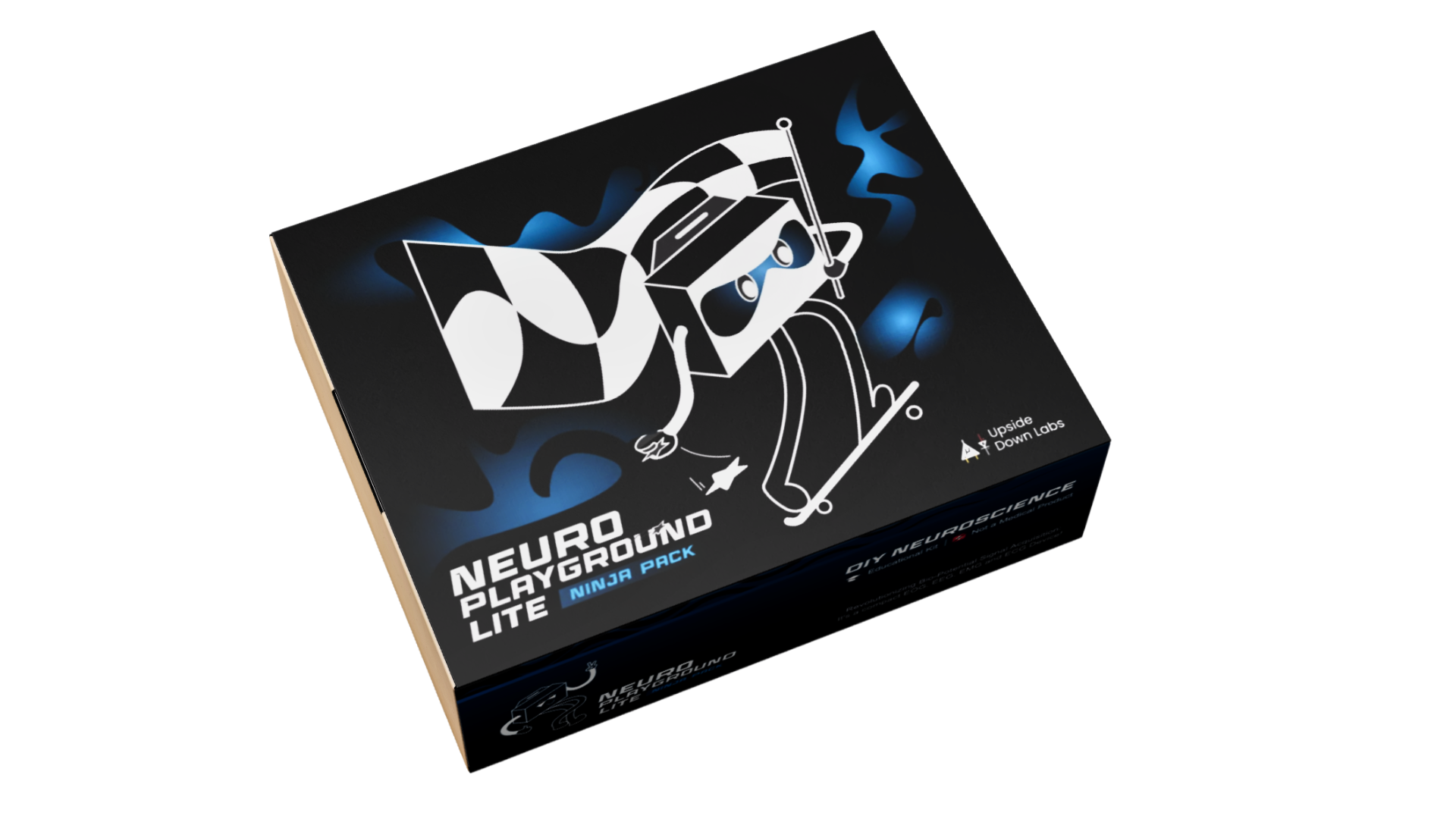
Neuro PlayGround Lite Ninja Pack#
Contents of the kit#
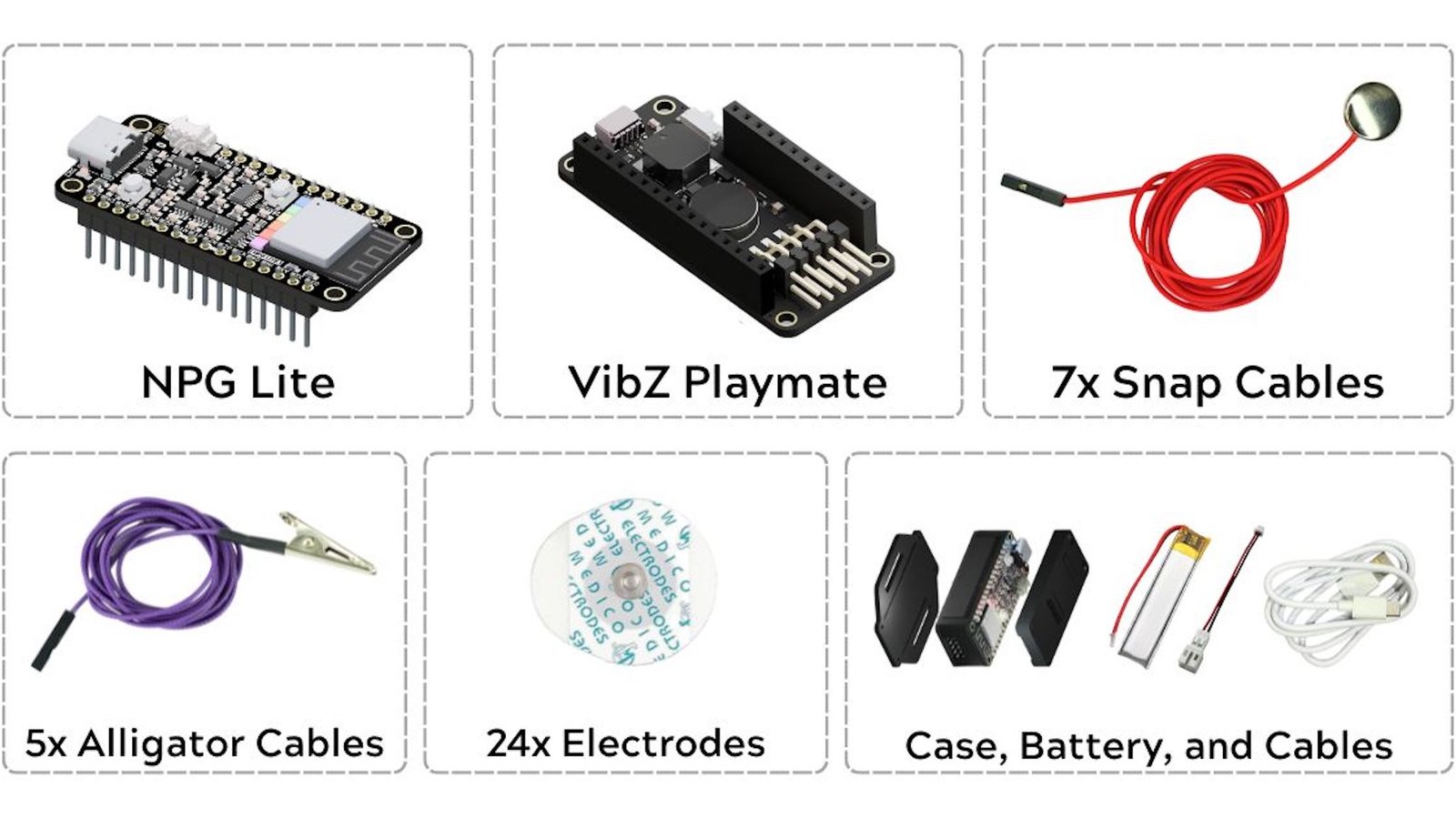
Kit Contents of NPG Lite Ninja Pack#
Kit Contents |
Qty |
|---|---|
NPG Lite Board |
1 |
VibZ Playmate |
1 |
Snap Cables |
7 |
Alligator Cables |
5 |
Gel Electrodes |
24 |
LiPo Battery |
1 |
Type-C Cable |
1 |
3D-Printed Case |
1 |
VibZ Playmate#
VibZ Playmate introduces a vibration motor for haptic feedback, a buzzer for auditory feedback, a QWIIC port for easy I2C sensor integration, an ON/OFF slide switch, 2.54 mm electrode header pins and common negative electrode option. With these Playmates, users can customize their setup for specific applications, whether in research, education, or interactive biofeedback experiments. This modular approach ensures flexibility, scalability, and better user experience.
Using the Kit#
This kit is beginner-friendly and you can easily start recording biopotential signals to create compelling HCI/BCI projects and explore the field of neuroscience. The VibZ Playmate easily connects to the NPG Lite board, providing simple haptic and auditory feedback and expanding the system for interactive experiments without complex wiring.
Step 1: Skin Preparation#
Apply Nuprep skin preparation Gel on the target areas where the Electrodes will be placed → Rub in circular motion → Clean with an alcohol swab or wet wipe.
For more information, please check out detailed step by step Skin Preparation Guide.
Step 2: Connect BioAmp Cables#
Using VibZ you can record 3-channel biopotential signals, connect the jumper wires according to the number of channels required:

NPG Lite VibZ Playmate Back#
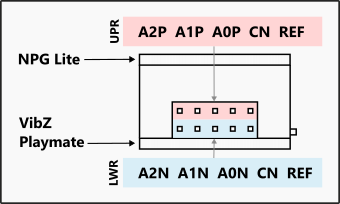
NPG Lite VibZ Playmate Connection#
Channel |
Pin |
Channel Connection |
|---|---|---|
Channel 0 |
A0P |
+ve of Channel 0 |
A0N |
-ve of Channel 0 |
|
Channel 1 |
A1P |
+ve of Channel 1 |
A1N |
-ve of Channel 1 |
|
Channel 2 |
A2P |
+ve of Channel 2 |
A2N |
-ve of Channel 2 |
|
REF |
Reference cable to REF |
|
CN |
Common Negative |
Using the Common Negative (CN)#
The Common Negative (CN) is an essential feature, especially when performing multi-channel recordings like EEG, as it simplifies electrode placement and wiring.
To configure a channel to use the Common Negative, follow these steps:
Choose Your Channels: Decide which BioAmp channels (A0, A1, A2) you want to share a negative electrode.
Solder the Bridge: Look for the small solder bridge labeled ‘CN’ next to the channel’s negative pin (A0N, A1N, A2N).
Make it Common: You must solder this bridge closed. This physically connects that channel’s negative input to the main Common Negative line.
Connect the Shared Electrode: Connect your single, common negative electrode jumper cable to the dedicated CN pin.
Simplify Wiring: For any channel configured this way, you no longer need to connect an electrode to the corresponding negative input pin (e.g., A0N, A1N, or A2N).

NPG Lite VibZ Playmate Common Negative#
Step 3: Place Gel Electrodes#
EMG (Electromyography)#
1-CH Setup: Place +ve and -ve cables of Channel 0 on the targeted muscle and REF cable on a bony part (back of the palm or elbow).
2-CH Setup: Place +ve, -ve cables of Channel 0 & 1 on the targeted muscles and 1 REF cable on a bony part.
3-CH Setup: Place +ve, -ve cables of Channel 0, 1 and 2 on the targeted muscles and 1 REF cable on a bony part.
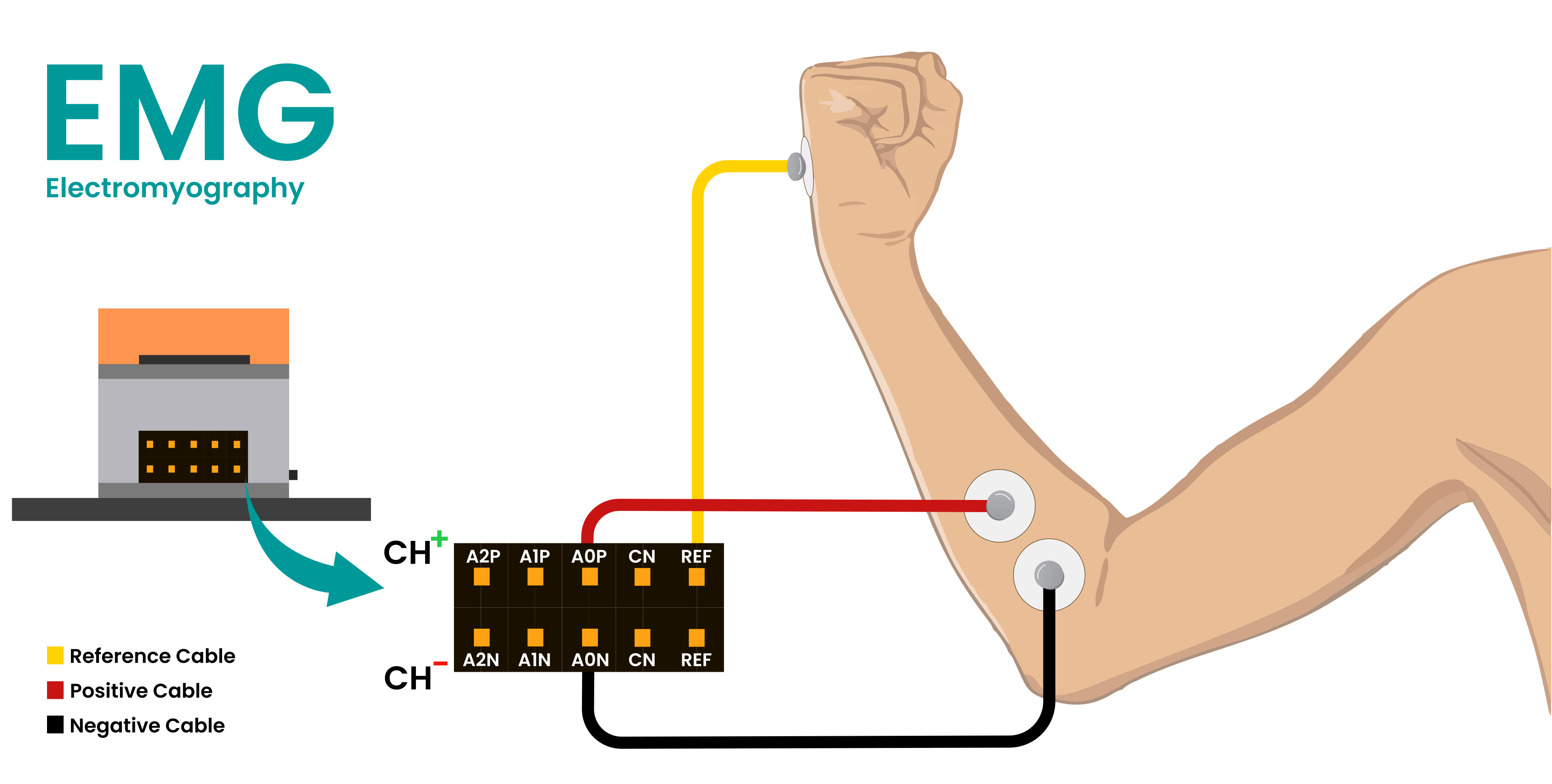
Connection for EMG#
ECG (Electrocardiogram)#
1-CH Setup: Place -ve cable of Channel 0 on the left side of the chest, +ve cable just to its right, and REF cable on the right side of chest.
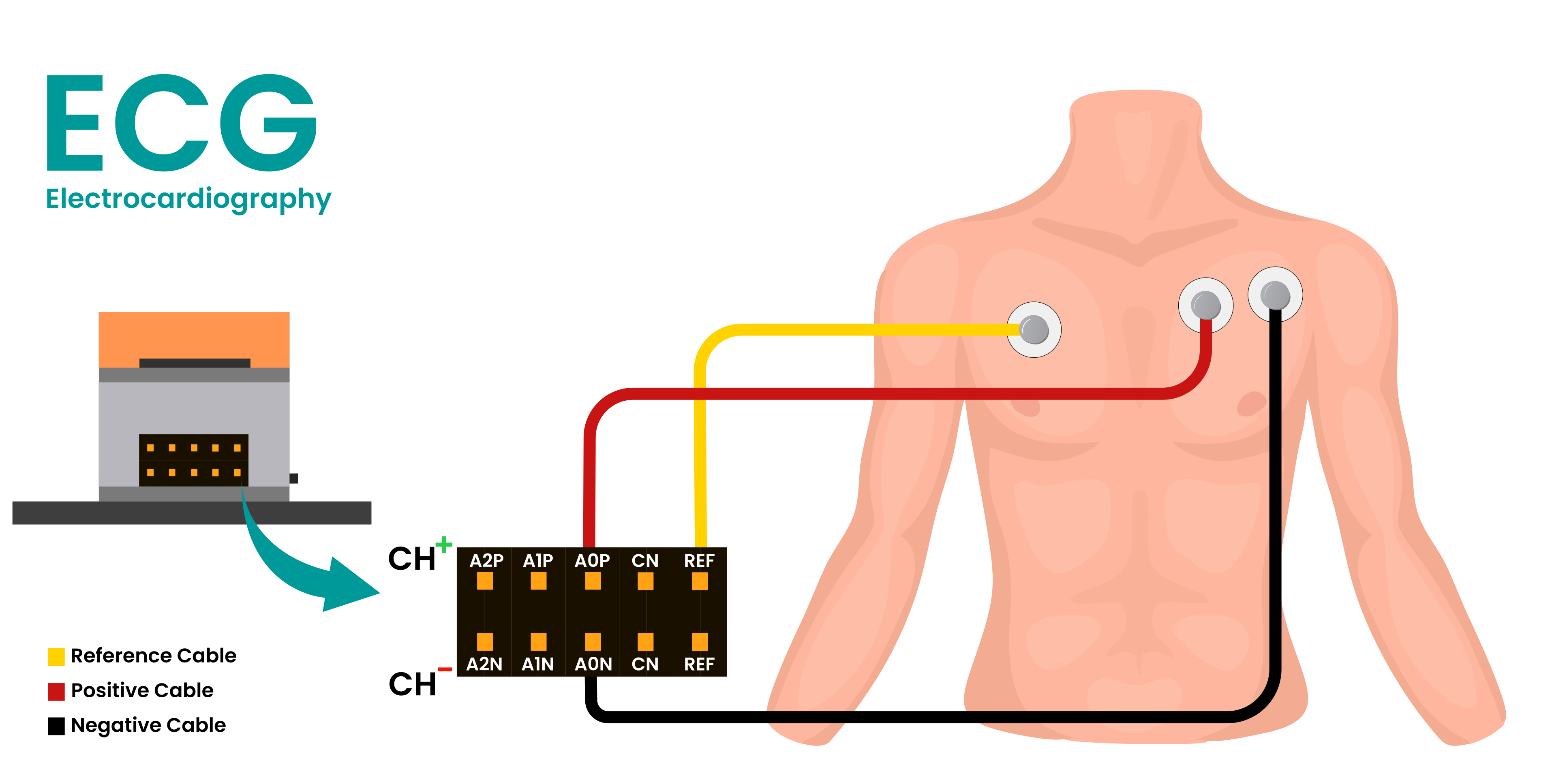
Connection for ECG#
EOG (Electroculography)#
Horizontal Movement Recording
1-CH Setup: Place -ve cable of Channel 0 on the right side of your right eye, +ve cable on the left side of the left eye, and REF cable on the bony part at the back side of your earlobe.
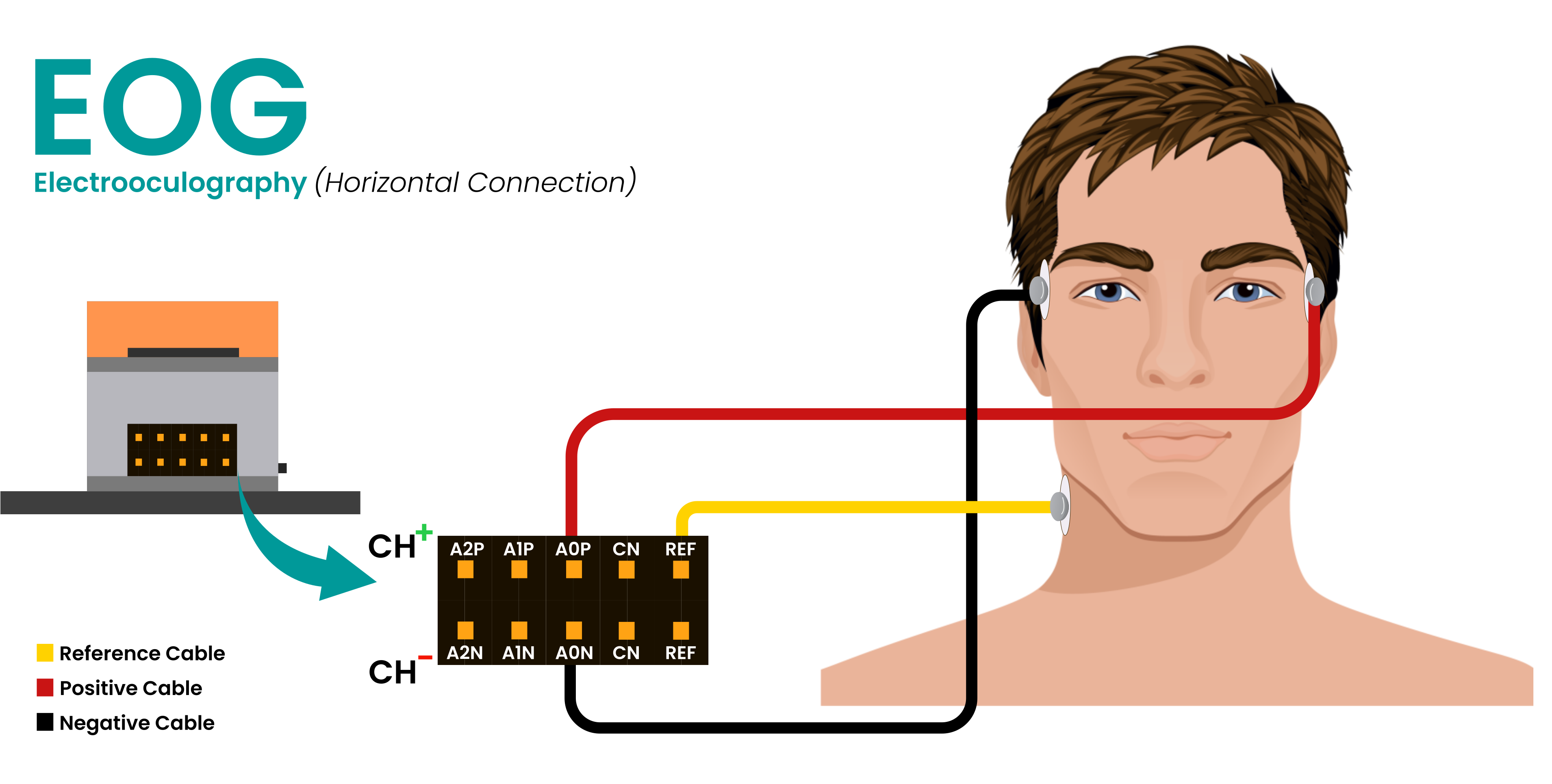
Connection for EOG Horizontal#
Vertical Movement Recording
1-CH Setup: Place the -ve cable of Channel 0 above either of your eyes, the +ve electrode below same eye, and the REF cable on the bony area behind your earlobe.
2-CH Setup: To record both horizontal & vertical eye movement together, follow the electrode placements mentioned above for Channels 0 and 1. Make sure to use just 1 REF cable.
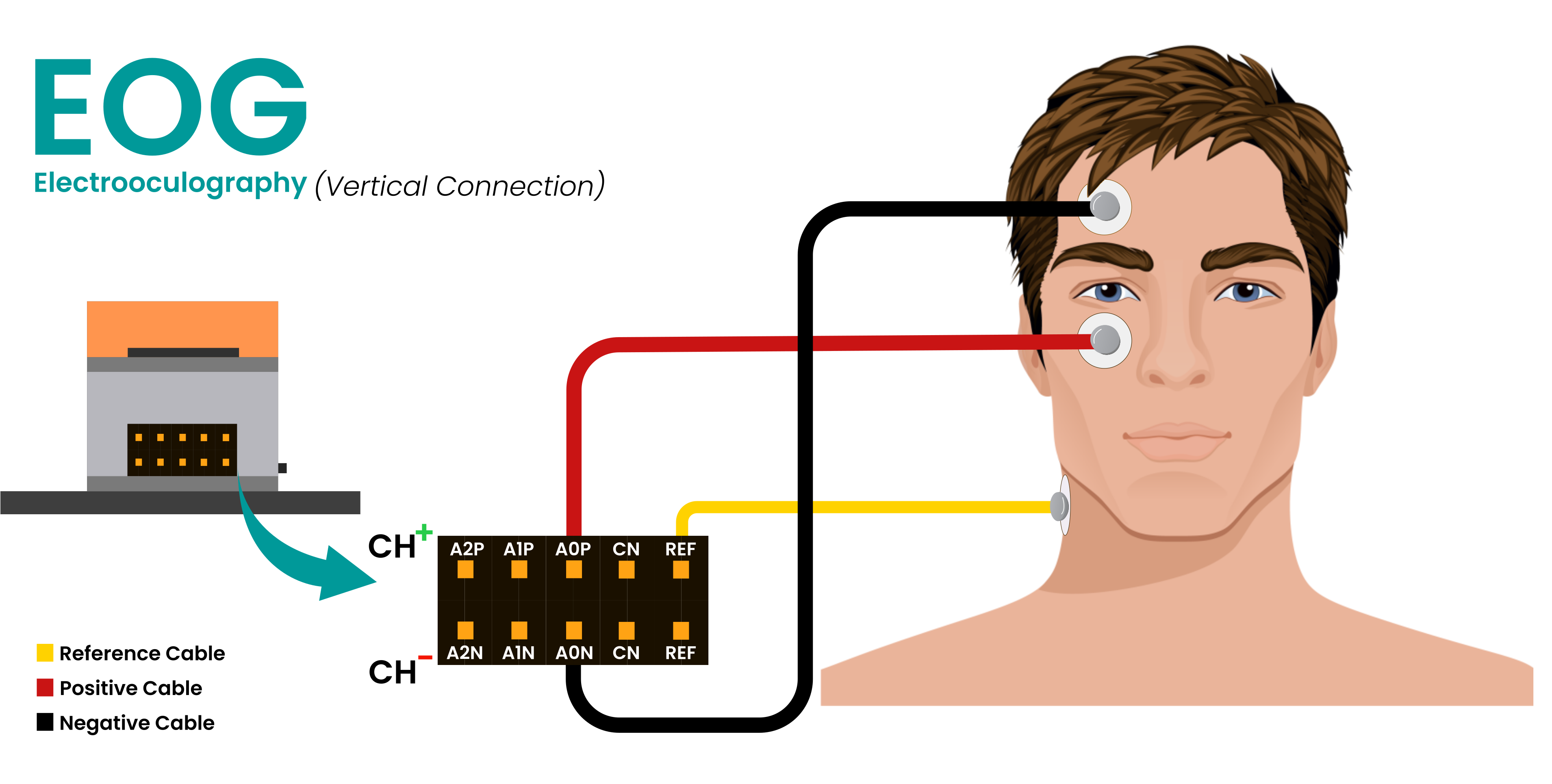
Connection for EOG Vertical#
EEG (Electroencephalogram)#
1-CH Setup: Place +ve cable of Channel 0 on the targeted area, REF and -ve cable on the bony part at the back of each earlobe. (refer to the International 10-20 system for recording EEG)
2-CH Setup: Place +ve cables of Channel 0 and 1 on the targeted area (refer to the International 10-20 system for recording EEG), 1 REF and 1 CN (Common Negative) cable on the bony parts at the back of each earlobe.
3-CH Setup: Place +ve cables of Channel 0, 1 and 2 on the targeted area (refer to the International 10-20 system for recording EEG), 1 REF and 1 CN (Common Negative) cable on the bony part at the back of each earlobe.
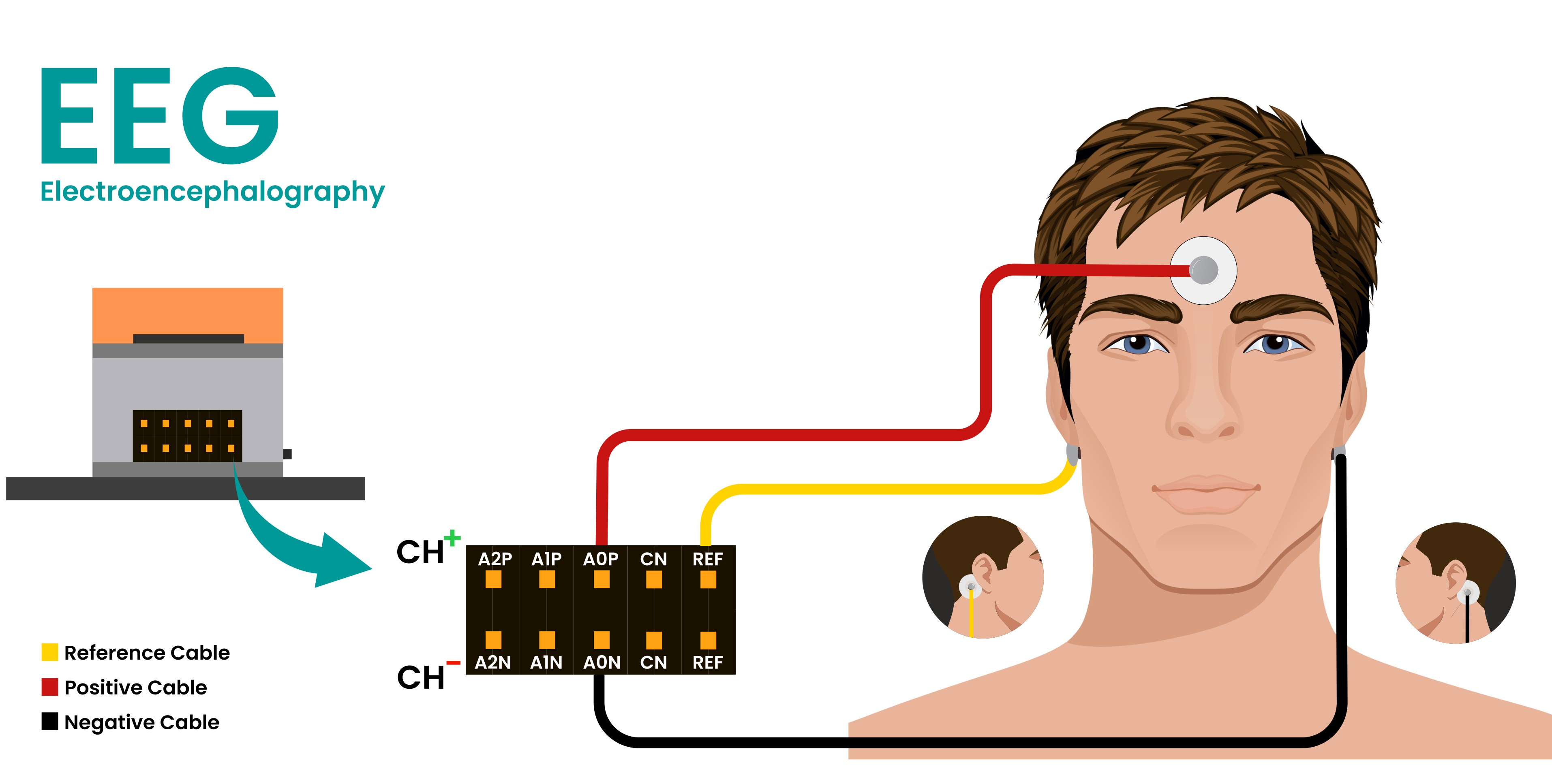
Connection for EEG#
Step 4: Upload Firmware#
Follow the quick steps below to upload the firmware to your NPG Lite device:
For detailed firmware upload guide, visit: How to Flash Firmware on NPG Lite
Power ON NPG Lite by flipping the on/off switch.
Connect it to Laptop/PC via USB-C cable.
Download the NPG Lite Flasher and run the app.
Select a firmware type, select your port, and flash it on your NPG Lite.
For a WiFi or BLE connection, remove the USB-C cable and enable Bluetooth or Wi-Fi on your laptop based on Firmware uploaded.
Step 5: Visualizing the signals#
Follow the steps below to view real-time biopotential signal data from your NPG Lite device:
Go to Chords Web
Click on
Visualize Now, navigate to theNPG-Lite, hit theConnectbutton and choose your device.You can see the biopotential signals in real-time.
For the detailed guide, visit: Chords Web Documentation
Explore features like play/pause data stream, apply filters, increase channel count, enable features for recording and downloading data in CSV format.
Battery Connection Guide#
Important
The battery connectors are polarity-sensitive and requires correct connection for safe operation. Incorrect connections will damage the device. Always verify connector polarity before connecting.
Option 1: Battery with 1.25mm PicoBlade Connector#
If you have purchased your battery from Upside Down Labs, or if have the same 1.25 mm PicoBlade connector, you can plug it directly into the battery connector on the NPG Lite.
While connecting the battery:
Make sure the Red Wire is connected to the
Positive (+) terminal.Make sure the Black Wire is connected to the
Negative (−) terminal.
This ensures the battery is connected with the correct polarity and prevents damage to the device.
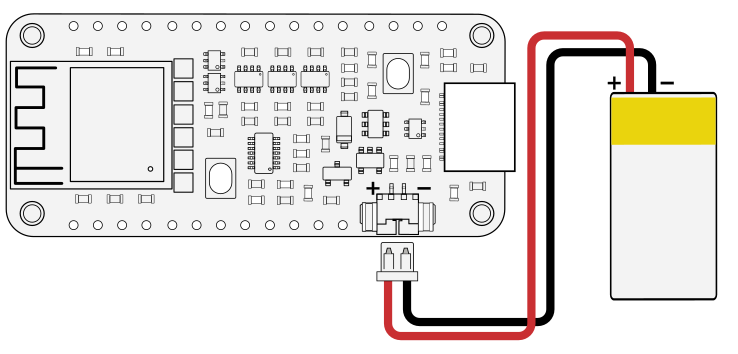
Using Battery with 1.25mm PicoBlade Connector#
Option 2: Using a Battery with a JST-PH 2.0 mm Connector#
If your battery has a JST-PH 2.0 mm connector, you will need to use the adapter cable included in the NPG Lite kit to connect it.
Follow these steps:
Connect the battery to the adapter cable with JST connector: Match the wire colors -
Red to RedandBlack to Black.Connect the adapter cable to NPG Lite using the PicoBlade connector:
Make sure the Red Wire lines up with the
Positive (+) terminal.Make sure the Black Wire lines up with the
Negative (−) terminalon the NPG Lite connector.
This ensures the battery is connected with the correct polarity and prevents damage to the device.

Using Battery with JST-PH 2.0mm Connector#
Verifying Battery Polarity with a Multimeter#
If you are unsure about your battery’s polarity, verify it before connection:
Set your multimeter to measure DC Voltage (V⎓) and select 20V or higher range if it has manual dial.
Touch the red probe to the metal terminal of the connector where the red wire is attached.
Touch the black probe to the metal terminal where the black wire is attached.
Read the display:
Positive voltage (e.g., +3.6V to +4.2V): Polarity is correct. ✅
Negative voltage (e.g., -4.2V): Polarity is reversed. ❌
Danger
Safety Reminder: Double-check all connections before powering ON the device. Wrong battery connection will damage the device.